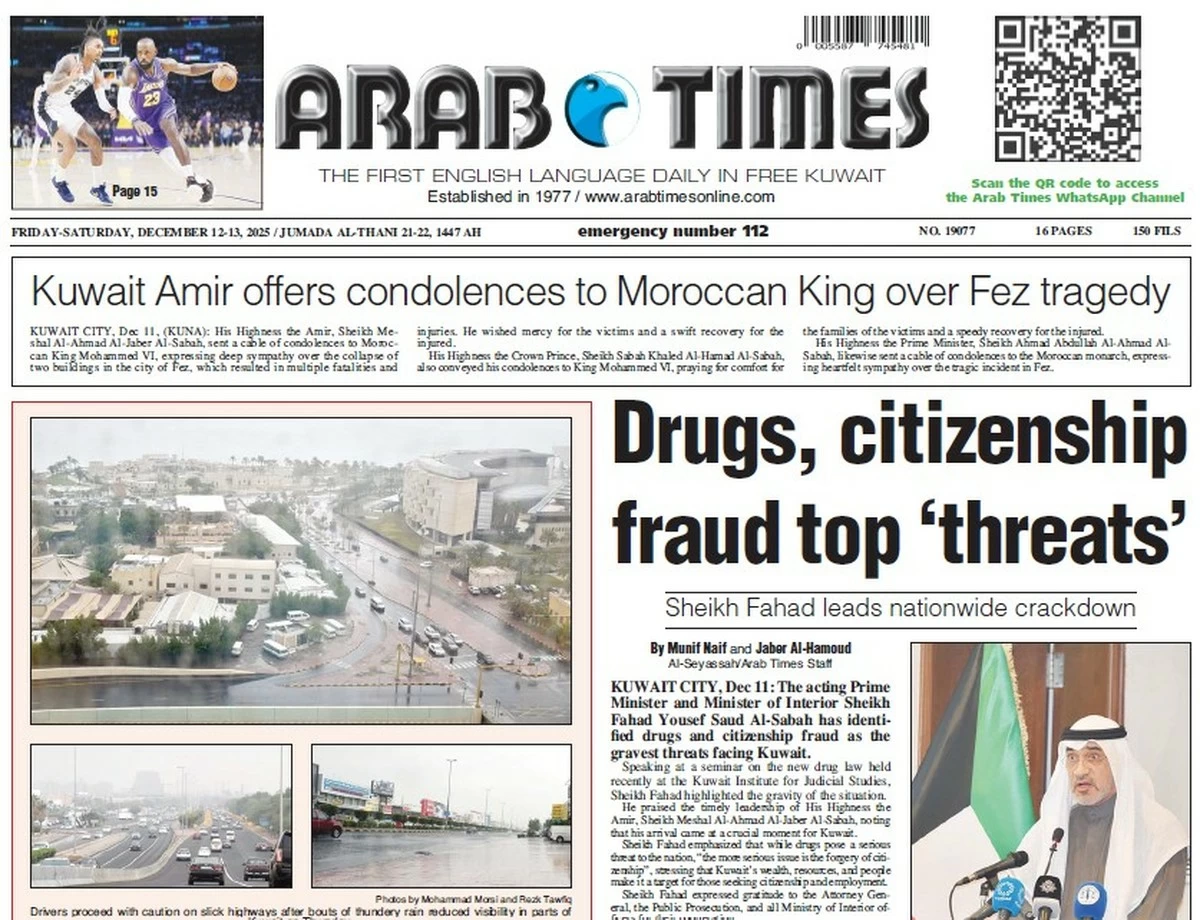29/12/2022
29/12/2022
Company raises efficiency of drilling operations in 12 platforms
KUWAIT CITY, Dec 29: The Kuwait Oil Company said that a road map has been drawn up to boost the country’s production and reach production of 800,000 barrels per day from northern Kuwait by 2026, reports Al-Qabas daily. The company indicated that the most prominent achievement in the field of boosting production in 2022 is that its level in the northern Kuwait operations area has reached 600,000 barrels per day. The company indicated that the share of the northern fields will reach 25% of the company’s total oil production within 5 years, pointing out that the road map aims to produce 700,000 barrels within two years from now.
The company reviewed its current achievements and future aspirations, in the field of projects and initiatives in various fields, stressing that 2022 was distinguished after the world, and Kuwait and its institutions, overcame the Corona virus crisis and life returned to normal.
Bright future
It stated that it had restored its normal activity, and was freed from the restrictions that may have limited some of its activities and operations, thus launching a new phase towards the bright future, which it sought in its various strategies, the latest of which is the 2040 strategy. The company has opened the Hubara Innovation Center in Ahmadi, in cooperation with the Sabah Al-Ahmad Center for Giftedness and Creativity.
The opening of the center comes in the context of a consensus within the oil sector on the need to integrate innovation into culture, as the center constitutes a national nucleus concerned with training and developing creativity and innovation for workers in the oil and gas sector, while providing distinguished national service.
The company has indicated that digital transformation is one of the current top priorities in moving to advanced and more advanced stages. In this context, it launched the “Digital Excellence Platform”, which was implemented first for the departments concerned with heavy oil production in the Umm Naqa and South Ratqa fields.
This platform aims to automate the flow models of all existing engineering and administrative work, production data, and reservoir monitoring and analysis in both the Umm Naga and South Ratqa fields, in order to facilitate follow-up and work to improve production around the clock. The company stated that the Development Drilling and Well Repair Team 5 succeeded in applying the Casing While Drilling technology for the first time in the Umm Qudair field, as well as setting a record for drilling using this technology, compared to all previous applications in the oil fields in Kuwait. The company, represented by the Gas Fields Development Group, the Technical Support Group, and the Deep Drilling Group, celebrated the drilling of the longest horizontal well in the Jurassic layer.
Technical expertise
This achievement was achieved by employing and exploiting the technical expertise available in the company and its contractors, as well as by using several services and modern technology, such as reservoir mapping services from Schlumberger GeoSphere HD. The Kuwait Oil Company indicated that the Development Drilling Group 1 succeeded in one of its most important projects for the fiscal year 2021- 2022, by improving the performance of drilling rig operations in the fields of northern Kuwait. The project contributed to the early delivery of wells to put them into production, 175 days ahead of schedule, in addition to saving about 1.75 million dinars, by raising the efficiency of drilling operations in 12 drilling platforms.
The group also succeeded in achieving three distinguished achievements, which are the drilling of the first multi-sided well in the Middle East, the success of the GeoSphere technology experiment to locate the well in the Jurassic reservoir in cooperation with Schlumberger, as well as the use of a 3D program to drill a well with an inclination of 95 degrees.
The company explained that it participated, among several government sectors and oil sector companies, in the “Shamel 7” exercise, which was coordinated by the Directorate-General of Fire Department (DGFD) in implementation of plans and protocols with various state agencies, within the framework of responding to any accident or disaster at the national level.


